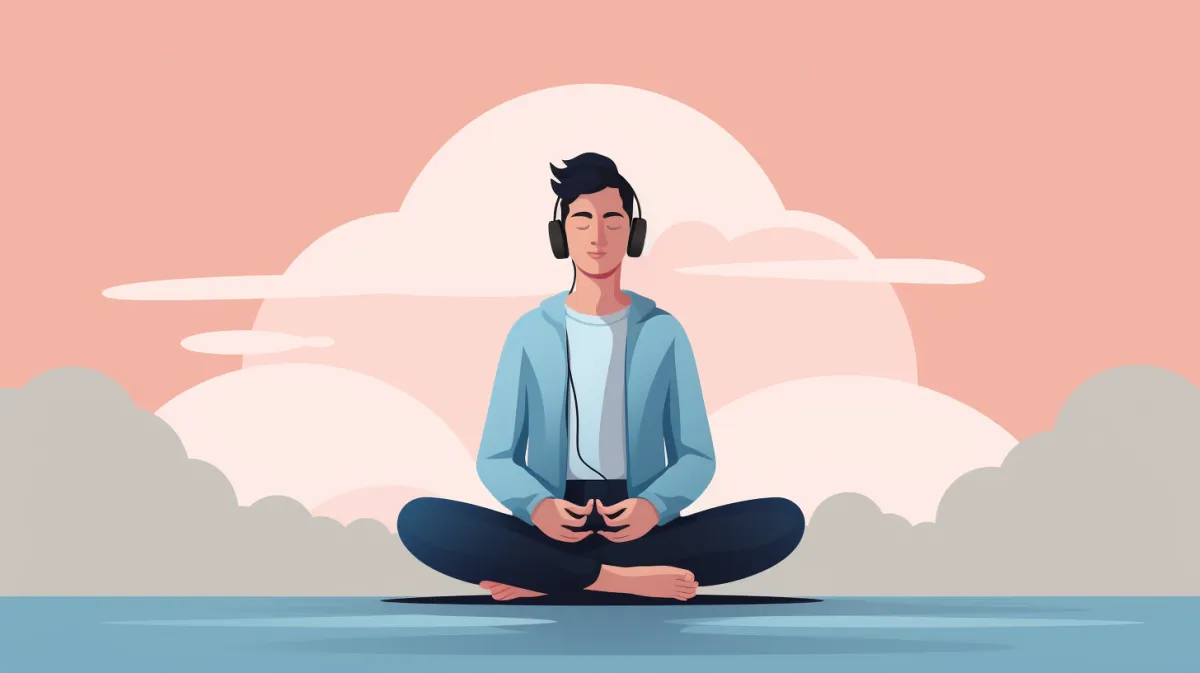What is an example of NSDR?

Non-Sleep Deep Rest (NSDR) is an umbrella term for a variety of practices that guide the brain and body into a state of deep relaxation and restoration.
These practices include, but are not limited to:
- Meditation
- Yoga nidra
- Hypnosis
NSDR protocols are designed to help relax the body and mind, recover some of the sleep you may not be getting at night, and restore levels of dopamine, especially in areas of the brain involved in motivation, cognitive, and motor control.
Example of an NSDR protocol
An example of an NSDR protocol could be a 10-minute guided relaxation script that you can find online, such as on YouTube or NSDR tracks here on Vespertone.
This NSDR script may include elements like long exhale breathing and a body scan to shift from active thinking and planning to pure sensation.
Here are examples of an non-sleep deep rest protocol:
@vespertone 💡Lets take a quick break with a five minute NSDR (Yoga Nidra style) guided meditation. 🟢What is NSDR? Non-Sleep Deep Rest is a relaxation technique that aims to achieve deep rest without actually falling asleep. It involves lying down in a comfortable position and focusing on slowing down the breath, calming the mind, and relaxing the body. NSDR techniques can include guided meditation, body scanning, and listening to calming music or sounds. Unlike sleep, NSDR allows for conscious awareness while still enabling the body to enter a state of profound relaxation and restfulness. This method is particularly beneficial for those who find it difficult to nap or want the benefits of deep rest without the time commitment of a full sleep cycle. 7️⃣ Key Benefits of NSDR: • Reduces Stress and Anxiety: NSDR helps in lowering cortisol levels, easing the mind, and reducing feelings of stress and anxiety. • Enhances Focus and Concentration: By calming the mind, NSDR can improve mental clarity and concentration. • Boosts Creativity: Relaxed states foster more creative thinking and problem-solving abilities. • Improves Mood: Engaging in NSDR regularly can enhance overall mood and emotional well-being. • Increases Energy Levels: Even a short period of NSDR can leave one feeling refreshed and rejuvenated. • Improves Physical Health: NSDR can help lower blood pressure, reduce heart rate, and improve overall cardiovascular health. • Enhances Sleep Quality: Regular practice of NSDR can lead to improved sleep quality and help regulate sleep patterns. #nsdr #nsdrsession #yoganidra #yoganidrameditation #nonsleepdeeprest #hubermanlab
♬ original sound - Vespertone NSDR
Difference between other practices
It's important to note that while NSDR shares similarities with practices like yoga nidra, it is distinct in its approach and may lack certain elements like intentions or mystical components.
The focus of NSDR is to bring about a state of deep relaxation through a combination of breathing exercises and attention to bodily sensations.
Benefits of NSDR
Beyond relaxation, NSDR offers a wealth of benefits:
- Stress reduction: Say goodbye to tension and anxiety. NSDR equips you with tools to manage stress effectively, leaving you feeling calm and collected.
- Improved sleep: No more restless nights! NSDR trains your brain and body for deeper sleep, reducing insomnia and promoting restful slumber.
- Enhanced focus and clarity: Feeling foggy? NSDR is your mental spring cleaning. It quiets the mind, sharpens focus, and boosts cognitive performance.
- Increased resilience: NSDR builds your inner strength. By regularly accessing deep relaxation, you become better equipped to handle life's challenges with greater resilience.
To learn more about NSDR and find specific protocols, check out our comprehensive guide on non-sleep deep rest.